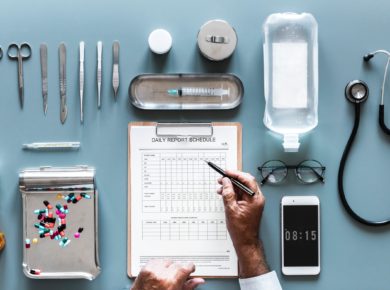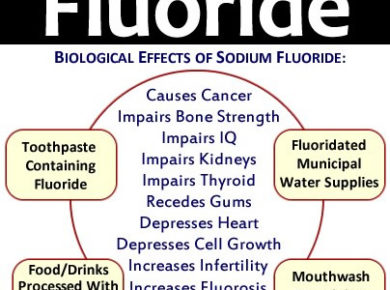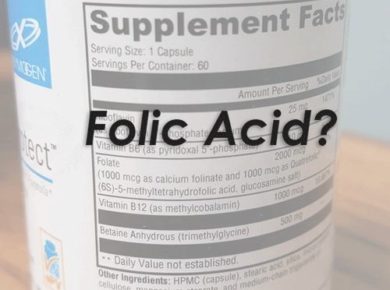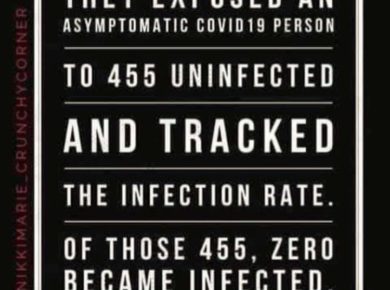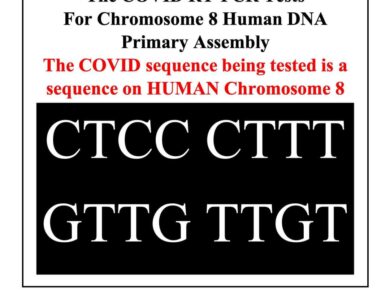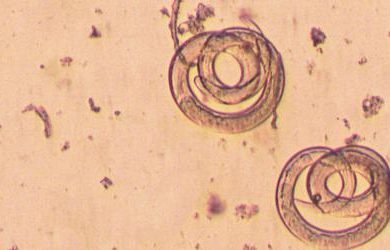Unfortunately, I have come across several people who do not understand the PCR test that they use to “diagnose” someone with the virus.
They simply regurgitate what the M.S.M. says. They do not have the skills to evaluate this test from a technical and scientific point of view.
The first mistake they make or believe is that the PCR was never meant to be a diagnostic test, never.
It is just a tool to amplify sequences of genetic materials like D.N.A. or R.N.A.
Second, they simply do not understand how it works in real life. Reading about it is one thing, and you can’t fully appreciate how this test is simply not specific.
In my career, I have done about 25 000-30 000 PCR tests based on my own estimation.
So, I do have the experience and knowledge to talk about it.
PCR is not that simple as opposed to the majority of people think.
I am about to get a bit technical, so bear with me 😊
You have to design the right primers based on the D.N.A. or R.N.A. sequence you want to amplify.
The length of the primers is critical. You also have to look at the G.C. content, the ratio of C.G. vs. AT. Too much G.C. and the primers won’t bind well to the genetic material. Too much AT and the primers might bind anywhere in a non-specific manner.
Then, you need to figure out the theoretical annealing temperature to use to do the PCR.
This is a very important step, as well. If the temperature is too low, the PCR will amplify in a non-specific manner. It would amplify the background. If the temperature is too high, the PCR won’t work.
In real life, this temperature has to be tested several times, and we need to figure out what is the best one.
Then, the number of cycles is very important as well.
A cycle threshold of 40 means that a person tests positive for COVID-19 if there is a match for one of the genetic sequences associated with SARS-CoV-2 in less than 40 cycles of amplification.
Just so you know, after 39 cycles of amplification, there are 550 BILLION copies of the D.N.A. being tested.
If the PCR test doesn’t find a match until 39 cycles, it means that the test is only finding trace amounts of one of the genetic sequences associated with SARS-Cov-2, and the person being tested has a 0% chance of getting sick or infecting another person but based on today’s C.D.C. standards that person will count as a new positive case of COVID-19!
The truth is… it was already proven that a patient with a cycle threshold value of 35 or higher has a 0% chance of being contagious. Patients with a cycle threshold value of 33 or 34 also have an extremely low chance of being contagious.
I know somebody who works in one of the largest U.S. diagnostic labs, and in recent weeks over 90% of all “positive” PCR tests for COVID-19 have had a cycle threshold value of 33 or higher.
And some labs actually use a threshold value of 45! A cycle step of 45 means that the background, the noise we call it, is amplified, and pretty much everything is positive!
The fear-mongering media refuses to report this fact. They refuse to even explain the meaning of a cycle threshold value.
If today’s media journalists wanted to earn their paycheck, they should do a report on what cycle threshold value is used to determine a positive COVID-19 test in every foreign country.
Most foreign countries appear to be using cycle threshold values of between 25 and 35 to determine if a person is positive for COVID-19, which explains why they have lower amounts of COVID-19 cases.
Yep, you read it right. The U.S. inflates their numbers by using a biased, fake PCR to diagnose you with the virus.
Here’s a very interesting paper that talks about this concept.
“Viral R.N.A. load as determined by cell culture as a management tool for discharge of SARS-CoV-2 patients from infectious disease wards.”
https://link.springer.com/article/10.1007/s10096-020-03913-9
Correlation between successful isolation of severe acute respiratory syndrome coronavirus 2 (SARS-CoV-2) in cell culture and cycle threshold (Ct) value of quantitative reverse transcription polymerase chain reaction (RT-PCR) targeting E gene suggests that patients with coronavirus disease 2019 (COVID-19) with Ct above 33 to 34 are not contagious and can be discharged from hospital care or strict confinement.
Previous researcher has observed that SARS-CoV-2 was detected by PCR up to 20 days after onset of symptoms; however, the virus could not be isolated after day 8 in spite of ongoing high viral loads of approximately 105 RNA copies/mL of sample.
This highlights that isolation of patients with COVID-19 should be isolated after diagnosis. But due to the prolonged shedding of R.N.A. in respiratory samples, when can a clinician consider a patient with COVID-19 as no longer contagious?
In order to answer this question, researchers at the Méditerranée Infection University Hospital Institute in Marseille, France, obtained 183 samples (174 nasopharyngeal swabs and 9 sputum samples) from 155 patients and inoculated them in cell cultures to correlate viral load to cultivable viruses.
SARS-CoV-2 R.N.A. positivity in patient samples was assessed by real-time RT-PCR targeting the E gene.
Among the 183 samples inoculated, 129 led to virus isolation, with 124 samples having a detectable cytopathic effect between 24 and 96 hours. Researchers observed a significant relationship between Ct value and culture positivity rate.
Samples with Ct values of 13 to 17 all led to a positive culture. The culture positivity rate then decreased progressively, inversely proportional to Ct values, to reach 12% at a 33 Ct value. No culture was obtained from samples with Ct value of > 34.
Based on this data, researchers deduced that patients with Ct values > 34 do not excrete infectious viral particles and thus may be discharged. They noted that in 6 patients treated with hydroxychloroquine and azithromycin, the current therapeutic protocol used at their institution, Ct values obtained between days 2 and 4 post-treatment were above 34.
Consistently, the essential problem is that many PCR tests have a “cycle quantification” (Cq) value of over 35, and some, including the “Drosten PCR test,” even have a Cq of 45.
The Cq value specifies how many cycles of D.N.A. replication are required to detect a real signal from biological samples.
“Cq values higher than 40 are suspect because of the implied low efficiency and generally should not be reported,” as it says in the MIQE guidelines.
https://www.gene-quantification.de/miqe-bustin-et-al-clin-chem-2009.pdf
MIQE stands for “Minimum Information for Publication of Quantitative Real-Time PCR Experiments,” a set of guidelines that describe the minimum information necessary for evaluating publications on Real-Time PCR, also called quantitative PCR or qPCR.
The inventor himself, Kary Mullis, agreed when he stated:
If you have to go more than 40 cycles to amplify a single-copy gene, there is something seriously wrong with your PCR.”
In a recent podcast interview, Bustin points out that “the use of such arbitrary Cq cutoffs is not ideal, because they may be either too low (eliminating valid results) or too high (increasing false “positive” results).”
And, according to him, a Cq in the 20s to 30s should be aimed at, and there is concern regarding the reliability of the results for any Cq over 35.
If the Cq value gets too high, it becomes difficult to distinguish real signals from the background, for example, due to reactions of primers and fluorescent probes, and hence there is a higher probability of false positives.
Moreover, among other factors that can alter the result, before starting with the actual PCR, in case you are looking for presumed R.N.A. viruses such as SARS-CoV-2, the R.N.A. must be converted to complementary D.N.A. (cDNA) with the enzyme Reverse Transcriptase—hence the “R.T.” at the beginning of “PCR” or “qPCR.”
But this transformation process is widely recognized as inefficient and variable.
https://www.ncbi.nlm.nih.gov/pmc/articles/PMC6374950/pdf/main.pdf
Stephen A. Bustin acknowledges problems with PCR in a comparable way.
For example, he pointed to the problem that in the course of the conversion process (R.N.A. to cDNA), the amount of D.N.A. obtained with the same R.N.A. base material can vary widely, even by a factor of 10.
Considering that the D.N.A. sequences get doubled at every cycle, even a slight variation becomes magnified and can thus alter the result, annihilating the test’s reliable, informative value.
In other words, we should be using a cycle threshold of 33, no more.
As we can see, using a threshold of 45, like we are in the U.S.A., is a complete scientific fraud!
In addition, there are 33 PCR tests approved by the F.D.A. with 10 different variations. In other words, these tests use different PCR settings to amplify genetic materials. All of them use cycles higher than 35.
And like we just saw, a cycle higher than 35 amplifies the background noise, giving false positives!
Here’s an interesting article from N.Y. Times:
“One solution would be to adjust the cycle threshold used to decide that a patient is infected. Most tests set the limit at 40, a few at 37. This means that you are positive for the coronavirus if the test process required up to 40 cycles, or 37, to detect the virus.
Tests with thresholds so high may detect not just live virus but also genetic fragments, leftovers from an infection that poses no particular risk — akin to finding a hair in a room long after a person has left, Dr. Mina said.
Any test with a cycle threshold above 35 is too sensitive, agreed Juliet Morrison, a virologist at the University of California, Riverside. “I’m shocked that people would think that 40 could represent a positive,” she said.”
A more reasonable cutoff would be 30 to 35, she added. Dr. Mina said he would set the figure at 30, or even less. Those changes would mean the amount of genetic material in a patient’s sample would have to be 100-fold to 1,000-fold that of the current standard for the test to return a positive result.
The C.D.C.’s own calculations suggest that it is extremely difficult to detect any live virus in a sample above a threshold of 33 cycles. Officials at some state labs said the C.D.C. had not asked them to note threshold values or to share them with contact-tracing organizations.”
https://www.cdc.gov/coronavirus/2019-ncov/hcp/duration-isolation.html
With a cutoff of 35, about half of those tests would no longer qualify as positive. About 70 percent would no longer be judged positive if the cycles were limited to 30.
In Massachusetts, from 85 to 90 percent of people who tested positive in July with a cycle threshold of 40 would have been deemed negative if the threshold were 30 cycles, Dr. Mina said. “I would say that none of those people should be contact-traced, not one,” he said.
Another great article:
“C.D.C. Coronavirus Test Kits Generate 30% False Positive and 20% False Negative Results – Connecticut Pathologist’s Newly Published Findings Confirm.”
In other words, the PCR test is not specific!
Finally, the last factor we need to consider is the amount and the purity of genetic material used.
As you know, they harvest genetic materials using a nasal swab. This sample is not pure at all. It contains all kinds of materials from patients, bacteria, viruses, mold, fungi, etc. It is a blend of genetic material from all kinds of sources.
This is a very big issue when you run PCR tests. It is very hard to obtain specificity when we use genomic materials as a starting sample. Very hard to amplify the right sequence.
A great part of my work was to optimize PCR protocols using genomic materials. And the main I had was that the background noise would get amplified because of the actual sequence we were targeting.
Primers would bind in a non-specific manner to the DNA, giving us the wrong amplification of the DNA sequence. And to be honest, the majority of the time, the PCR would simply not work despite all the tempts done using all kinds of settings.
In other words, PCR tests using genomic material is very hard to do.
Consistently, this article supports my point:
“BOMBSHELL: WHO Coronavirus PCR Test Primer Sequence is Found in All Human DNA.”
“The sequence “CTCCCTTTGTTGTGTTGT” is an 18-character primer sequence found in the WHO coronavirus PCR testing protocol document. The primer sequences are what gets amplified by the PCR process in order to be detected and designated a “positive” test result. It just so happens this exact same 18-character sequence, verbatim, is also found on Homo sapiens chromosome 8!”
What this means is that one of the primers used to perform the PCR binds to the human DNA. This is what I am saying. It is really hard to perform PCR tests using genomic DNA; we get all kinds of background noise.
Then, the amount of material used is also important. As you can imagine, this varies from patient to patient.
If you use too much material, you will get non-specific amplification. If you use too little, you may not get anything at all.
Thus, this is a major roadblock to get specific PCR results because the amount used is different from test to test.
All those factors make the PCR test non-specific for the COVID19.
We know today that anything can be amplified like genetic materials from other coronaviruses.
Moreover, it is worth mentioning that the PCR tests used to identify so-called COVID-19 patients presumably infected by what is called SARS-CoV-2 do not have a valid gold standard to compare them with.
This is a fundamental point. Tests need to be evaluated to determine their preciseness, strictly speaking, their “sensitivity” and “specificity,” by comparison with a “gold standard,” meaning the most accurate method available.
If we had a new test for picking up [the bacterium] golden staph in blood, we’ve already got blood cultures, that’s the gold standard we’ve been using for decades, and we could match this new test against that. But for COVID-19, we don’t have a gold standard test.
Jessica C. Watson from Bristol University confirms this. In her paper “Interpreting a COVID-19 test result”, published recently in The British Medical Journal, she writes that there is a “lack of such a clear-cut ‘gold-standard’ for COVID-19 testing.”
https://www.bmj.com/content/369/bmj.m1808
Apart from the fact that it is downright absurd to take the PCR test itself as part of the gold standard to evaluate the PCR test, there are no distinctive specific symptoms for COVID-19.
And if there are no distinctive specific symptoms for COVID-19, COVID-19 diagnosis cannot be suitable for serving as a valid gold standard.
In addition, “experts” overlook the fact that only virus isolation, i.e., an unequivocal virus proof, can be the gold standard.
So, if there are no distinctive specific symptoms for COVID-19 and the virus has not been isolated yet, there could not be a gold standard for the PCR test.
Now the question is: What is required first for virus isolation/proof? We need to know where the R.N.A. for which the PCR tests are calibrated comes from.
As textbooks (e.g., White/Fenner. Medical Virology, 1986, p. 9) as well as leading virus researchers such as Luc Montagnier or Dominic Dwyer state, particle purification — i.e., the separation of an object from everything else that is not that object, as for instance Nobel laureate Marie Curie purified 100 mg of radium chloride in 1898 by extracting it from tons of pitchblende, is an essential pre-requisite for proving the existence of a virus, and thus to prove that the R.N.A. from the particle in question comes from a new virus.
The reason for this is that PCR is extremely sensitive, which means it can detect even the smallest pieces of D.N.A. or R.N.A., but it cannot determine where these particles came from.
That has to be determined beforehand, and that is the core problem of this test. We have no idea what is being amplified.
And because the PCR tests are calibrated for gene sequences (in this case, R.N.A. sequences because SARS-CoV-2 is believed to be an R.N.A. virus), we have to know that these gene snippets are part of the looked-for virus. And to know that correct isolation and purification of the presumed virus has to be executed.
Here’s a great article to read:
This is very interesting:
Several study authors were asked: “Do your electron micrographs show the purified virus?” they gave the following responses:
Study 1: Leo L. M. Poon; Malik Peiris. “Emergence
of a novel human coronavirus threatening human health” Nature
Medicine, March 2020
Replying Author: Malik Peiris
Date: May 12, 2020
Answer: “The image is the virus budding from an infected cell. It is
not a purified virus.”
Study 2: Myung-Guk Han et al. “Identification of
Coronavirus Isolated from a Patient in Korea with COVID-19”, Osong
Public Health and Research Perspectives, February 2020
Replying Author: Myung-Guk Han
Date: May 6, 2020
Answer: “We could not estimate the degree of purification because we
do not purify and concentrate the virus cultured in cells.”
Study 3: Wan Beom Park et al. “Virus Isolation
from the First Patient with SARS-CoV-2 in Korea”, Journal of Korean
Medical Science, February 24, 2020
Replying Author: Wan Beom Park
Date: March 19, 2020
Answer: “We did not obtain an electron micrograph showing the degree
of purification.”
Study 4: Na Zhu et al., “A Novel Coronavirus from
Patients with Pneumonia in China,” 2019, New England Journal of
Medicine, February 20, 2020
Replying Author: Wenjie Tan
Date: March 18, 2020
Answer: “[We show] an image of sedimented virus particles, not
purified ones.”
Regarding the mentioned papers, it is clear that what is shown in the electron micrographs (E.M.s) is the end result of the experiment, meaning there is no other result that they could have made E.M.s from.
That is to say, if the authors of these studies concede that their published E.M.s do not show purified particles, then they definitely do not possess purified particles claimed to be viral. (In this context, it has to be remarked that some researchers use the term “isolation” in their papers, but the procedures described therein do not represent a proper isolation (purification) process. Consequently, in this context, the term “isolation” is misused).
Do you get this? The virus has never been purified yet! The PCR test is based on assumptions!
Thus, the authors of four of the principal, early 2020 papers claiming discovery of a new coronavirus concede they had no proof that the origin of the virus genome was viral-like particles or cellular debris, pure or impure, or particles of any kind. In other words, the existence of SARS-CoV-2 R.N.A. is based on faith, not fact.
Dr. Charles Calisher stated:
“modern virus detection methods like] sleek polymerase chain reaction […] tell little or nothing about how a virus multiplies, which animals carry it, [or] how it makes people sick. [It is] like trying to say whether somebody has bad breath by looking at his fingerprint.”
https://science.sciencemag.org/content/293/5527/24
More importantly, Dr. Calisher does not know of one single paper in which SARS-CoV-2 has been isolated and finally really purified.
He specifically stated:
“I know of no such a publication. I have kept an eye out for one.”
This actually means that one cannot conclude that the R.N.A. gene sequences, which the scientists took from the tissue samples prepared in the mentioned in vitro trials and for which the PCR tests are finally being “calibrated,” belong to a specific virus, in this case, SARS-CoV-2.
In addition, there is no scientific proof that those R.N.A. sequences are the causative agent of what is called COVID-19.
To establish a causal connection, one way or the other, i.e., beyond virus isolation and purification, it would have been absolutely necessary to carry out an experiment that satisfies the four Koch’s postulates.
But there is no such experiment.
The necessity to fulfill these postulates regarding SARS-CoV-2 is demonstrated not least by the fact that attempts have been made to fulfill them. But even researchers claiming they have done it, in reality, did not succeed.
One example is a study published in Nature on May 7. This trial, besides other procedures that render the study invalid, did not meet any of the postulates.
https://www.nature.com/articles/s41586-020-2312-y_reference.pdf
For instance, the alleged “infected” laboratory mice did not show any relevant clinical symptoms clearly attributable to pneumonia, which according to the third postulate, should actually occur if a dangerous and potentially deadly virus was really at work there.
And the slight bristles and weight loss, which were observed temporarily in the animals, are negligible, not only because they could have been caused by the procedure itself, but also because the weight went back to normal again.
Also, no animal died except those they killed to perform the autopsies. And let’s not forget: These experiments should have been done before developing a test, which is not the case.
Revealingly, none of the leading German representatives of the official theory about SARS-Cov-2/COVID-19 — the Robert Koch-Institute (R.K.I.), Alexander S. Kekulé (University of Halle), Hartmut Hengel and Ralf Bartenschlager (German Society for Virology), the aforementioned Thomas Löscher, Ulrich Dirnagl (Charité Berlin) or Georg Bornkamm (virologist and professor emeritus at the Helmholtz-Zentrum Munich) — could answer the following question:
“If the particles that are claimed to be to be SARS-CoV-2 have not been purified, how do you want to be sure that the R.N.A. gene sequences of these particles belong to a specific new virus?”
Regarding the question “Has the Charité convinced itself that appropriate particle purification was carried out? ” the Charité concedes that they didn’t use purified particles.
And
Which means they just assumed the R.N.A. was viral.
Incidentally, the Corman et al. paper, published on January 23, 2020, didn’t even go through a proper peer review process, nor were the procedures outlined therein accompanied by controls, although it is only through these two things that scientific work becomes really solid.
https://www.ncbi.nlm.nih.gov/pmc/articles/PMC6988269/
It is also certain that we cannot know the false positive rate of the PCR tests without widespread testing of people who certainly do not have the virus, proven by a method that is independent of the test (having a solid gold standard).
Therefore, it is hardly surprising that there are several papers illustrating irrational test results.
For example, already in February, the health authority in China’s Guangdong province reported that people have fully recovered from illness blamed on COVID-19, started to test “negative,” and then tested “positive” again.
A month later, a paper published in the Journal of Medical Virology showed that 29 out of 610 patients at a hospital in Wuhan had 3 to 6 test results that flipped between “negative,” “positive,” and “dubious.”
https://onlinelibrary.wiley.com/doi/full/10.1002/jmv.25786
A third example is a study from Singapore in which tests were carried out almost daily on 18 patients, and the majority went from “positive” to “negative” back to “positive” at least once, and up to five times in one patient.
https://jamanetwork.com/journals/jama/fullarticle/2762688
Even Wang Chen, president of the Chinese Academy of Medical Sciences, conceded in February that the PCR tests are “only 30 to 50 percent accurate”:
Sin Hang Lee from the Milford Molecular Diagnostics Laboratory sent a letter to the WHO’s coronavirus response team and to Anthony S. Fauci on March 22, 2020, saying that:
It has been widely reported in the social media that the RT-qPCR [Reverse Transcriptase Quantitative PCR] test kits used to detect SARS-CoV-2 R.N.A. in human specimens are generating many false-positive results and are not sensitive enough to detect some real positive cases.”
https://childrenshealthdefense.org/wp-content/uploads/04-30-20-Letter-to-WHO-and-Dr.-Fauci.pdf
In other words, even if we theoretically assume that these PCR tests can really detect viral infection, the tests would be practically worthless and would only cause an unfounded scare among the “positive” people tested.
This also becomes evident, considering the positive predictive value (PPV).
The PPV indicates the probability that a person with a positive test result is truly “positive” (i.e., has the supposed virus), and it depends on two factors: the prevalence of the virus in the general population and the specificity of the test, that is the percentage of people without disease in whom the test is correctly “negative” (a test with a specificity of 95% incorrectly gives a positive result in 5 out of 100 non-infected people).
With the same specificity, the higher the prevalence, the higher the PPV.
In this context, on June 12, 2020, the journal Deutsches Ärzteblatt published an article in which the PPV has been calculated with three different prevalence scenarios.
https://www.aerzteblatt.de/archiv/214370/PCR-Tests-auf-SARS-CoV-2-Ergebnisse-richtig-interpretieren
The results must, of course, be viewed very critically, first because it is not possible to calculate the specificity without a solid gold standard, as outlined, and second because the calculations in the article are based on the specificity determined in the study by Jessica Watson, which is potentially worthless, as also mentioned.
But if you abstract from it, assuming that the underlying specificity of 95% is correct and that we know the prevalence, even the mainstream medical journal Deutsches Ärzteblatt reports that the so-called SARS-CoV-2 RT-PCR tests may have “a shockingly low” PPV.
In one of the three scenarios, figuring with an assumed prevalence of 3%, the PPV was only 30 percent, which means that 70 percent of the people tested “positive” are not “positive” at all. Yet “they are prescribed quarantine,” as even the Ärzteblatt notes critically.
In a second scenario of the journal’s article, a prevalence of a rate of 20 percent is assumed. In this case, they generate a PPV of 78 percent, meaning that 22 percent of the “positive” tests are false “positives.”
That would mean: If we take the around 9 million people who are currently considered “positive” worldwide, supposing that the true “positives” really have a viral infection, we will get almost 2 million false “positives.”
All this fits with the fact that the C.D.C. and the F.D.A., for instance, concede in their files that the so-called “SARS-CoV-2 RT-PCR tests” are not suitable for SARS-CoV-2 diagnosis.
https://www.fda.gov/media/134922/download
In the “C.D.C. 2019-Novel Coronavirus (2019-nCoV) Real-Time RT-PCR Diagnostic Panel“ file from March 30, 2020, for example, it says:
“Detection of viral R.N.A. may not indicate the presence of an infectious virus or that 2019-nCoV is the causative agent for clinical symptoms.”
And:
“This test cannot rule out diseases caused by other bacterial or viral pathogens.”
And the F.D.A. admits that:
“positive results […] do not rule out bacterial infection or co-infection with other viruses. The agent detected may not be the definite cause of disease.”
Remarkably, in the instruction manuals of PCR tests, we can also read that they are not intended as a diagnostic test, as for instance, in those by Altona Diagnostics and Creative Diagnostics.
https://www.creative-diagnostics.com/sars-cov-2-coronavirus-multiplex-rt-qpcr-kit-277854-457.htm
There is also reasonable to conclude that the PCR test from Roche and others cannot even detect the targeted genes.
So how can it be that those who claim the PCR tests are highly meaningful for so-called COVID-19 diagnosis blind out the fundamental inadequacies of these tests, even if they are confronted with questions regarding their validity?
Certainly, the apologists of the novel coronavirus hypothesis should have dealt with these questions before throwing the tests on the market and putting basically the whole world under lockdown, not least because these are questions that come to mind immediately for anyone with even a spark of scientific understanding.
Thus, the thought inevitably emerges that financial and political interests play a decisive role in this ignorance about scientific obligations. N.B., the WHO, for example, has financial ties with drug companies, as the British Medical Journal showed in 2010.
And experts criticize “that the notorious corruption and conflicts of interest at WHO have continued, even grown“ since then. The C.D.C. as well, to take another big player, is obviously no better off.
Finally, the reasons and possible motives remain speculative, and many involved surely act in good faith; but the science is clear: The numbers generated by these RT-PCR tests do not in the least justify frightening people who have been tested “positive” and imposing lockdown measures that plunge countless people into poverty and despair or even drive them to suicide.
Without a doubt, eventual excess mortality rates are caused by the therapy and by the lockdown measures. At the same time, the “COVID-19” death statistics also comprise patients who died of a variety of diseases, redefined as COVID-19 only because of a “positive” test result whose value could not be more doubtful.
In conclusion, the PCR test used by the testing centers are not specific for COVID19 and can’t detect this virus.
It is the biggest scientific fraud of our times!
God bless y’all 😊
Dr. Serge
PS. Censorship is real. Please sign up to my email update and receive now a FREE book “The Science of Detoxification and How to Properly Rid Your Body of Toxins” at https://science.drsergegregoire.com/
PSS. Oftentimes, parents hide their position against vaccines. They fear persecution and bullying. In the past, the mainstream media have been disrespectful toward what they like to call “anti-vaxxers.” Their way to silence an inconvenient truth should not prevail. This publication has been designed to give you arguments and strength with organized evidence-based logic and rational conclusions. This guide is a companion document to empower your desire to voice your convictions. Order it at www.drsergegregoire.com

